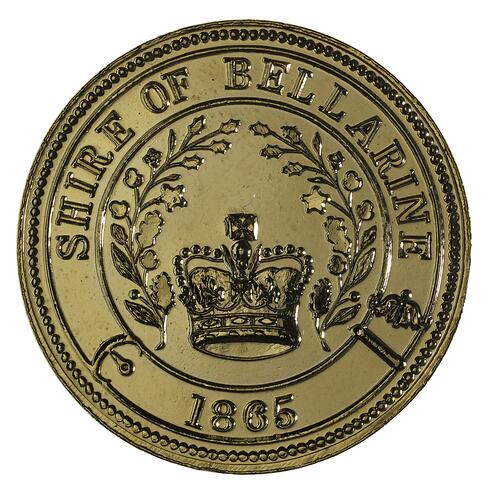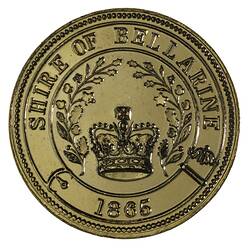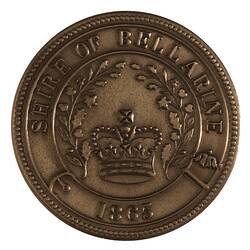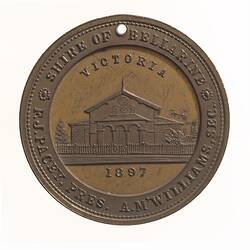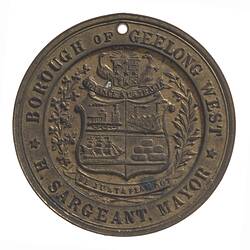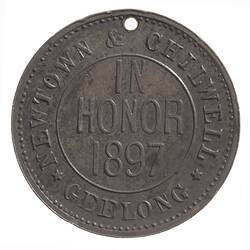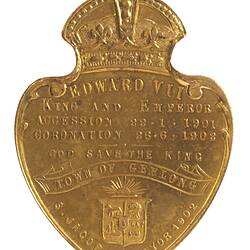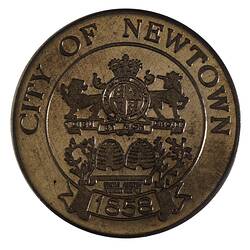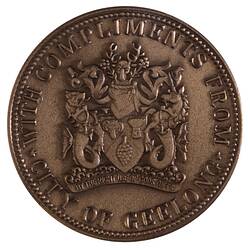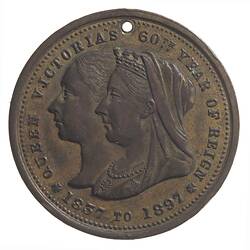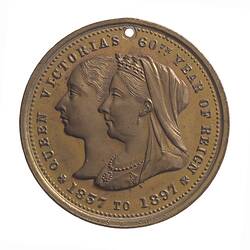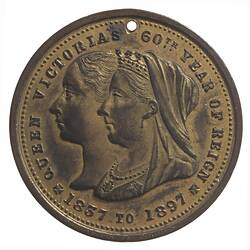Geelong is Victoria's largest provincial urban region. It is located 65 km from central Melbourne across the Port Phillip and Corio Bays. The name 'Geelong' was derived from the First Peoples word 'jillong', noted by explorers Hume and Hovell in 1824 when they came to Corio Bay. It was thought to mean land or cliffs. The name was formally given by Governor Bourke in 1837.
In June 1835 John Batman took lands from local First Peoples, the western boundary of which included Geelong. Seventeen months later two of Geelong's earliest settlers, John Cowie and David Stead, came from Tasmania to graze sheep. Two months later the Manifold brothers landed sheep at Point Henry. About the same time Dr. Alexander Thomson settled at the future Geelong suburb of Belmont, and established his Kardinia estate overlooking the Barwon River.
In 1838 a customs house was erected to deal with shipping activities. The sandbar blocking access past Point Henry was successfully breached, and cargo movements were henceforth shared between Point Henry and the Geelong waterfront. A town survey was undertaken and land sales were conducted early in 1839, the same year the Woolpack Inn (later Mack's) was opened. The Geelong Advertiser, the oldest continuously published newspaper in Victoria, began publication the following year. In 1841 St. John's Presbyterian church was opened.
During the late 1840s churches and schools, and local industries such as flour mills, tallow works and vineyards, were established. The Geelong Town Council was incorporated in October 1849.
The start of the gold rush greatly increased Geelong's maritime activity, in part because the inland route to Ballarat was flatter than the one from Melbourne over the Dividing Range. Wool from the Western District pastoral properties increased outgoing traffic. Geelong's population went from 8,000 in 1851 to 22,000 in 1853. It then stabilized, not reaching 30,000 for another sixty years.
During the late 1850s some of Geelong's notable institutions and buildings were created: Geelong Grammar School and Geelong National Grammar School (later Matthew Flinders Girls' Grammar) in 1858, the Town Hall, Market Square, the mechanics' institute, and the railway connection to Melbourne was opened. Geelong's third notable educational institution, Geelong College, began in 1861. The Geelong mechanic's institute fostered a technological school in 1869, which evolved to become the Gordon Technical College (1887). It became the Gordon Institute of Technology in 1921 and expansion to a campus at Waurn Ponds in 1971 (later Deakin University).
Geelong also continued to develop as an industrial centre. During the late 1860s and the 1870s woollen mills, a meat preserving works and a brick and tile company were opened. The Barwon Paper Mill was opened in 1878, the same year serious infestations of phylloxera were reported in the area's extensive vineyards.
In 1894 a better seafaring lane across the sandbar was created with the Hopetoun Channel.
The Town of Geelong became a City on 8 December, 1910. Geelong City Council boundaries extended from Rippleside at the western end of Corio Bay, along Western Beach and Eastern Beach and ended at Eastern Park, just beyond Limeburners Point.
Between 1922 and 1925 Geelong's industrial growth began to develop substantially with three woollen mills, Cresco fertilizers and the Ford Motor Company's vehicle plant near Corio. The Corio whiskey distillery opened in 1928. On the eve of World War II the International Harvester Works were opened beside Ford, and a grain-elevator terminal was built at Corio Quay.
In the post-war years Geelong entered a period of strong growth. Post-war migrants settled in new suburbs. The Shell Oil Refinery opened at Corio in 1954 and in 1963 the Alcoa aluminum refinery was opened at Point Henry. Between 1947 and 1965 greater Geelong's population increased from 58,400 to 101,600 people.
The rapid development beyond central Geelong resulted in small industrial premises becoming under-used or abandoned. Urban consolidation for redevelopment overtook older areas. New retail areas such as Market Square began to be developed in the 1980s.
The Geelong City Council was dissolved by Order of the Governor in Council on Tuesday 18 May, 1993. On that date the Cities of Geelong, Geelong West and Newtown, the Rural City of Bellarine, the Shires of Corio and South Barwon and parts of the Shires of Bannockburn and Barrabool were united to form the Greater Geelong City Council.
The City of Geelong issued a medal in 1985 to celebrate Victoria's sesquicentenary (NU 20674).
References:
Australian Places website, Monash University, http://arts.monash.edu/ncas/multimedia/gazetteer/list/geelong.html, accessed 10/11/2003.
More Information
-
Keywords
-
Localities
-
Authors
-
Article types
